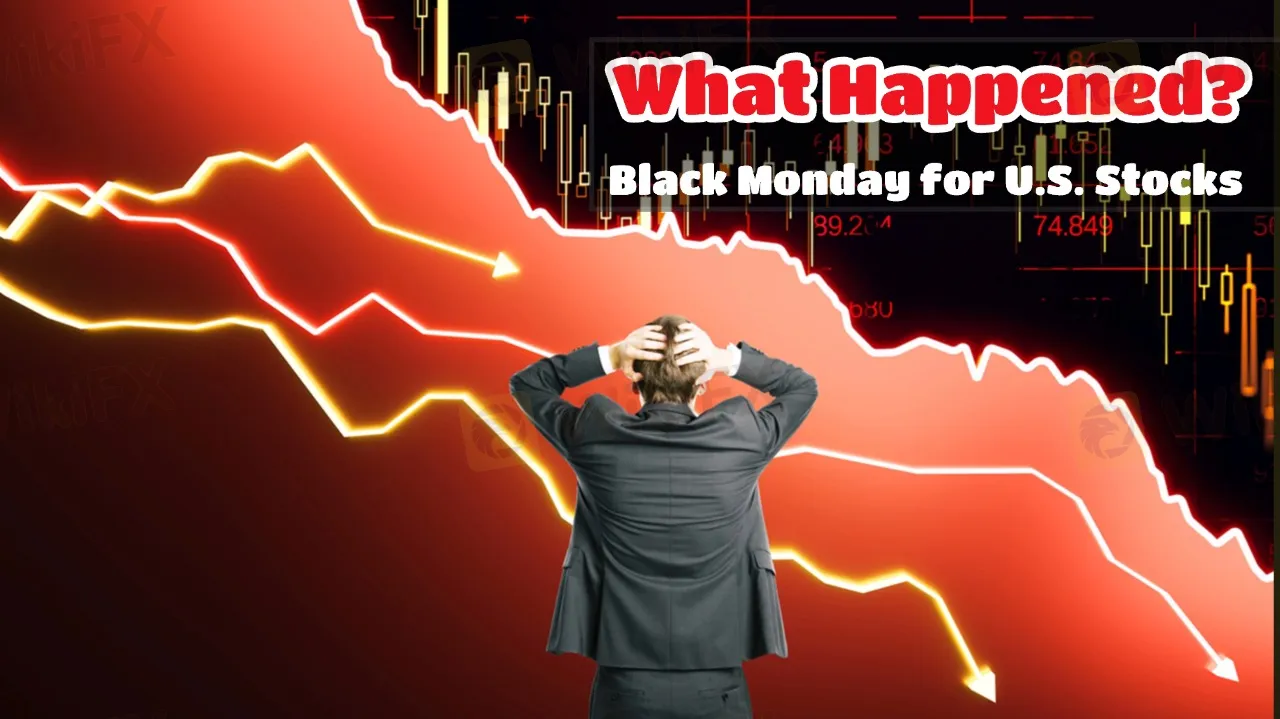Black Monday for U.S. Stocks: What Happened?
Abstract:The U.S. stock market suffered another major blow, with all three major indices tumbling and tech giants losing over $830 billion in market value. Market panic intensified, recession concerns escalated, and the Federal Reserve’s policy direction became a key focus.

Following last weeks sharp sell-off, U.S. stocks faced another “Black Monday.” All three major indices opened lower and continued to decline throughout the day. The S&P 500 dropped more than 3% intraday, the Nasdaq plunged over 4%, and the Dow Jones Industrial Average fell nearly 1,190 points at its lowest, closing down 2.1%.
By the end of the session, the Nasdaq had posted a 4% loss, marking its worst single-day decline since September 2022, while the S&P 500 fell 2.7%.
Tech stocks were hit particularly hard. The “Magnificent Seven,” including Nvidia, Microsoft, and Apple, all fell more than 2%. Tesla suffered an even steeper drop of over 15%, marking its biggest single-day decline since 2020. In total, the seven tech giants lost over $830 billion in market value, setting a record for the largest single-day loss.
Why Did U.S. Stocks Plummet?
Analysts widely attribute the sell-off to comments made by former President Donald Trump, which heightened investors' concerns about a potential recession.
In a recent interview, Trump acknowledged that the U.S. economy was in a “transition period” and did not rule out the possibility of a recession. He also suggested that tariffs could continue to rise, further fueling market uncertainty. Investors worry that the government may be willing to sacrifice short-term economic growth in pursuit of its long-term policy objectives.
Additionally, a wave of sell-offs exacerbated market losses. Hedge funds accelerated short positions, and investors rapidly pulled out of tech, financial, and consumer discretionary sectors. The S&P 500 is now approaching its critical 200-day moving average, and a break below this key support level could signal further downside.
Meanwhile, in the bond market, short-term U.S. Treasury yields have plunged, indicating that traders expect the Federal Reserve to start cutting interest rates as early as June to prevent further economic deterioration.
Market uncertainty continues to grow. The Trump administration‘s trade and fiscal policies remain unclear, and investors lack consensus on the Fed’s rate-cut trajectory. If interest rate cuts fail to provide enough relief, market volatility could persist. Furthermore, uncertainty surrounding tariff policies, inflationary pressures, and a potential tech stock correction will all play a crucial role in shaping the future direction of the U.S. stock market.
Read more

Broker Comparsion: FXTM vs AvaTrade
FXTM and AvaTrade are two well-established online brokers offering forex and CFD trading across global markets. Both enjoy strong reputations and high ratings on WikiFX—FXTM holds an AAA overall rating, while AvaTrade scores 9.49/10, indicating they’re regarded as reliable choices by the community. However, since brokers have great reputation in the industry, how do we know which one is more suitable for individuals to invest in? Today's article is about the comparison between FXTM and AvaTrade.

Pi Network: Scam Allegations Spark Heated Debate
A whistleblower report has surfaced, casting doubt on the legitimacy of Pi Network, alleging psychological manipulation, opaque operations, and potential financial exploitation. What is your take on this?

Webull Listed on Nasdaq Following SPAC Merger with SK Growth
Webull and SK Growth complete their business combination, with Webull now trading under the ticker “BULL.” App hits 50 million downloads worldwide.

UN Warns Asian Scam Operations are Spreading Worldwide
UN report reveals Asian scam operations expanding globally, targeting Africa, Latin America with cyberfraud, generating billions amid crackdowns.
WikiFX Broker
Latest News
Love, Investment & Lies: Online Date Turned into a RM103,000 Scam
Broker Took 10% of User's Profits – New Way to Swindle You? Beware!
Pi Network: Scam Allegations Spark Heated Debate
Broker Comparsion: FXTM vs AvaTrade
Account Deleted, Funds Gone: A New Broker Tactic to Beware Of?
Broker’s Promise Turns to Loss – Funds Disappear, No Compensation!
StoneX Subsidiary, Gain Global Markets Bermuda, Penalized for Trading Misconduct
El Salvador and U.S. Launch Cross-Border Crypto Regulatory Sandbox
The Instagram Promise That Stole RM33,000
Coinbase Launches Bitcoin Yield Fund for Institutional Investors
Rate Calc
